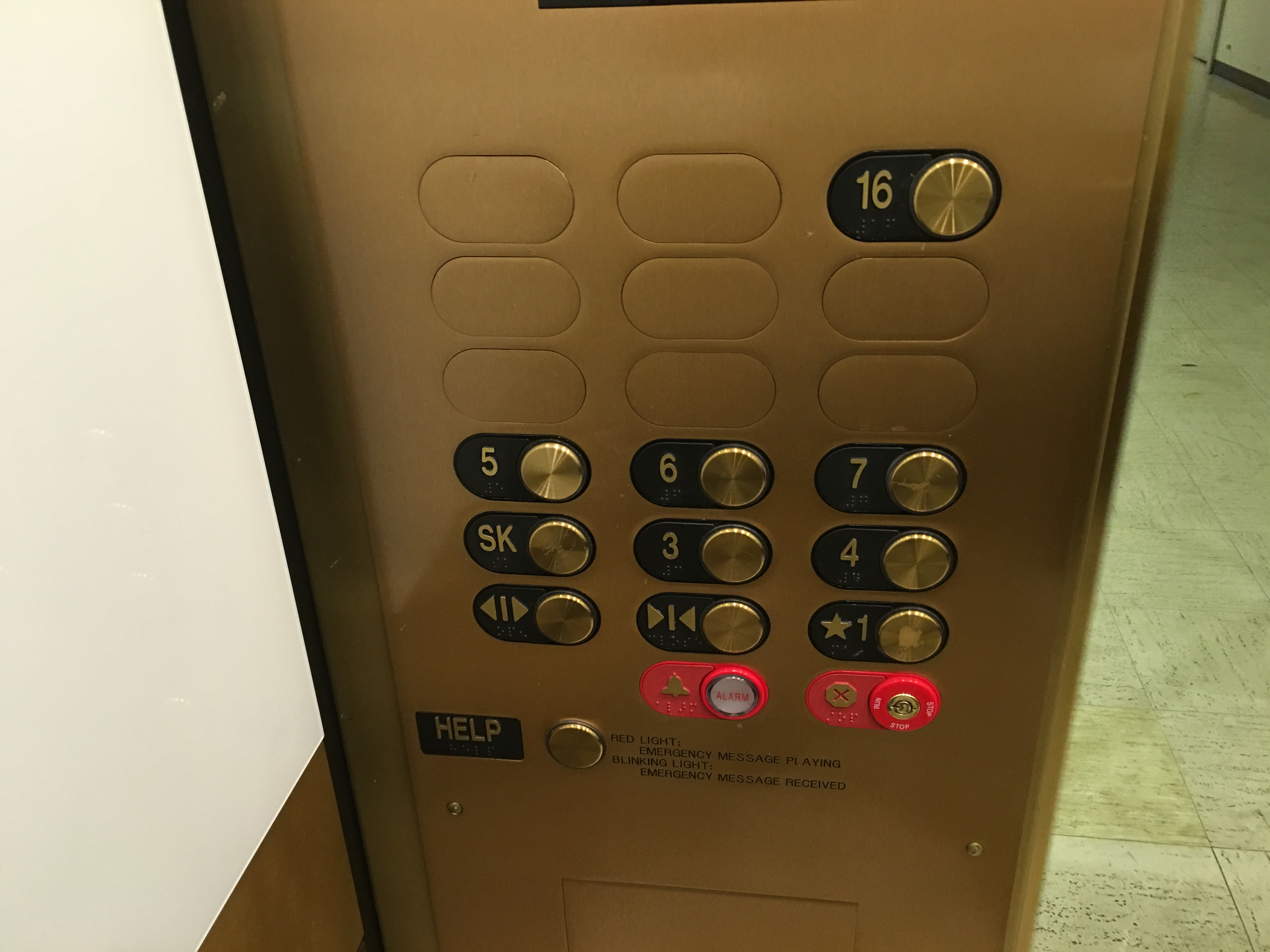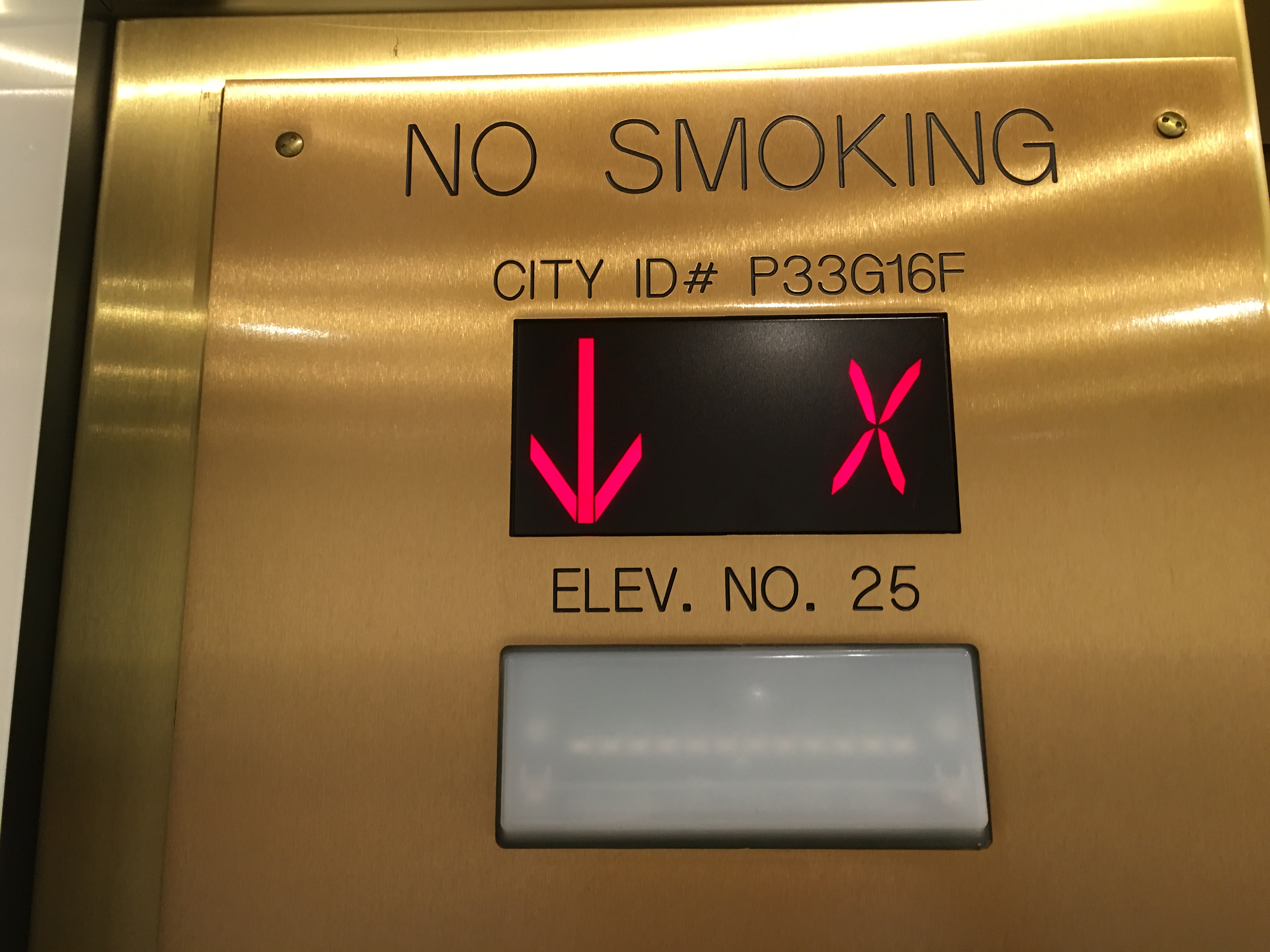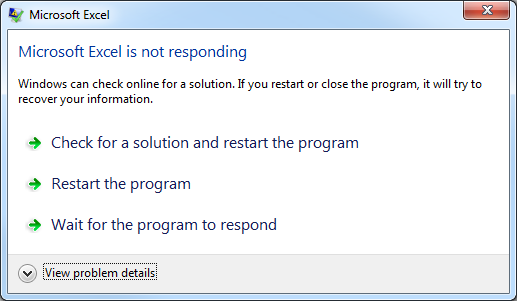Last year, my employer flew me to their office in St. Paul, MN. Sometimes I wonder why we end up with offices where we do. I’m sure a geographer had a hand in it. But anyway, ever notice how some places add an odd degree of drama to what would otherwise be benign circumstances? Like someone had to come up with compelling narrative? The office was in a suite, on the 6th or 7th floor–I can’t remember which–in downtown, in the First National Bank Building.
The building was apparently involved in some 1930s gangster-type shenanigans, and at one point the bank’s vault was the victim of an attempted robbery. Supposedly the corridor leading to the vault is still riddled with Tommy-gun bullets. But, the vault isn’t open to the public so I couldn’t verify this firsthand. Nor did I take the time to verify the building’s backstory. Maybe I will, after this.
Upon arriving at said building, like most normal people, my boss and I took the elevator. This is what the panel looked like:

It gave me pause, more so than it would have had the numbers simply stopped at 7. I brought this oddity to my boss’ attention, who responded with complete disinterest. Then again, all he wanted to do in his off time was sit in his hotel room, so maybe some people are just generally uninterested with the world as a whole. But not I! This mystery needed investigation.
During our meetings, I made it a point to ask every group–the people who went to that office every day: What was on floor 16? The responses were all of a similar variety. No one knew, no one had thought about it, and no one had gone up there. They saw this panel every day and not once did a single person push the button to floor 16. It seemed that I would have to find out for myself.
Back in the elevator, on our way to the hotel, I pushed the button. Now my boss’ indifference edged towards open irritation, but I ignored him. My curiosity moved from just floor 16 to all the intermediate unlabeled floors as the elevator display also stopped listing numeric designations en route.

Upon reaching floor 16, the doors opened into a mysterious fog. Not really. They opened into a completely innocuous floor. The doors, also devoid of numbers, taunted me with suspense as they were all locked.

I thought I might try for the stairwell and explore the unlabeled mystery floors below, but upon this suggestion, my boss threatened to abandon me. I was, of course, capable of navigating my way back to my hotel room alone, but he was also ready to get food and I started thinking about what kind of dinner I could charge to the company card. I left the building, possibly forever, none closer to a satisfying answer. So if anyone finds themselves in St. Paul’s First National Bank Building, go to floor 16 and complete my unfinished saga.
–Simon




 Sadly, I could not find an online calculator that provides coffee products by cost per ounce. Searching for one only yielded a number of self-righteous articles criticizing how much coffee costs and how stupid people are for buying Keurigs or going to coffee shops. But I did plug some numbers into the calculator, and my own coffee preference: Peet’s, ranks approximately by cost the type of coffee I should be buying. So once again, the math doesn’t lie:
Sadly, I could not find an online calculator that provides coffee products by cost per ounce. Searching for one only yielded a number of self-righteous articles criticizing how much coffee costs and how stupid people are for buying Keurigs or going to coffee shops. But I did plug some numbers into the calculator, and my own coffee preference: Peet’s, ranks approximately by cost the type of coffee I should be buying. So once again, the math doesn’t lie:
 And all I was after was the sharing of knowledge and information, and to physically sit near each other. My request for a desk near the Operations team was immediately denied. Then, as the discussions began to involve higher levels of management, they died. Some of the changes were minor, like upgrading to HTML5, or implementing RSS update feeds. But ultimately, sensing stagnation and seeing opportunity elsewhere, I took a promotion and transferred to Marketing.
And all I was after was the sharing of knowledge and information, and to physically sit near each other. My request for a desk near the Operations team was immediately denied. Then, as the discussions began to involve higher levels of management, they died. Some of the changes were minor, like upgrading to HTML5, or implementing RSS update feeds. But ultimately, sensing stagnation and seeing opportunity elsewhere, I took a promotion and transferred to Marketing. Remember that story with the little people who would steal insignificant items from around the house in order to craft useful tools needed for their survival? It was a humorous take on the phenomenon of small and low-value clutter vanishing, seemingly without explanation. It’s an innocent way to cope with the irritations of their misplacement.
Remember that story with the little people who would steal insignificant items from around the house in order to craft useful tools needed for their survival? It was a humorous take on the phenomenon of small and low-value clutter vanishing, seemingly without explanation. It’s an innocent way to cope with the irritations of their misplacement.